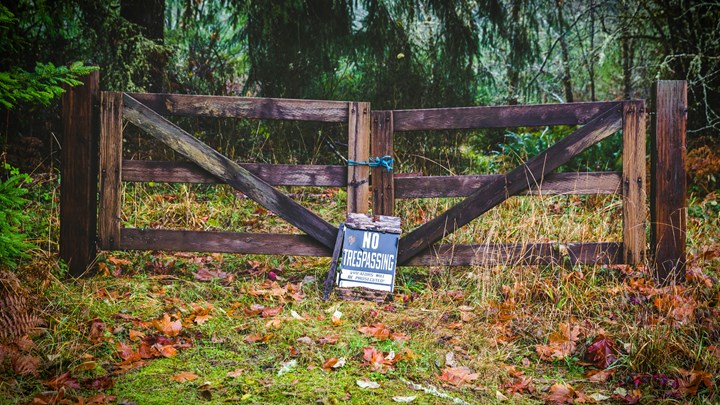
by Mark Chesnut - Monday, April 7, 2025

Hunters advocating for access to public lands in the western United States recently achieved a significant victory in the courtroom. On March 18, a three-judge panel of the Denver-based 10th Circuit Court of Appeals ruled in Iron Bar Holdings v. Cape that corner-crossing is protected by federal law.
In the United States, the federal government owns more than one-quarter of the land—some 640 million acres—yet all of it is not accessible. The controversy at hand involved properties where public lands converge at a corner bordered on two sides by private lands. Many Western landowners prohibit access to these areas, even though those crossing at the corners are not technically on their property.
In the case before the 10th Circuit, four hunters from Missouri had used a ladder to cross a corner to hunt on a property in Carbon County, Wyo., bordered on two sides by the Iron Bar Ranch. Subsequently, the landowner not only had the hunters charged with criminal trespassing but also filed a civil trespassing suit alleging $9 million in damages, arguing that the hunters’ brief presence in the airspace above while using the ladder to cross constituted trespassing.
The Iron Bar ranch spans 50 square miles, interspersed with 27 federal and state public parcels totaling 11,000 acres. Except for the points where the public corners touch, most of these parcels are completely enclosed by Iron Bar’s private land.
According to court documents, in the 2022 incident, the Iron Bar property manager and another employee confronted the hunters multiple times as they attempted to hunt elk on the public land. They also interfered with the hunters’ activities by driving motorized vehicles across public parcels to scare away game.
Two lower courts found the hunters innocent of the trespassing charges, but the ranch owner appealed the case to the 10th Circuit, prompting the most recent 49-page court ruling, in which the court considered several other cases involving cutting off access to public lands.
“We extract from these cases that the UIA (Unlawful Inclosures Act) proscribes the ‘exclusive use and occupancy of any part of the public lands’ and further prohibits conduct that ‘prevent[s] or obstruct[s] free passage or transit over or through the public lands,’” the ruling stated. “The controlling principle is that checkerboard landowners cannot maintain a barrier that has the effect of fully enclosing public lands and preventing complete access for a lawful purpose. When a landowner denies checkerboard access, he imposes a proscribable nuisance under federal law, ‘notwithstanding such action may involve an entry upon the lands of a private individual.’”
In the end, the court ruled against Iron Mountain Ranch, thereby ensuring hunters’ access to patchwork publicly owned lands surrounded by private properties.
“The western checkerboard and UIA reflect a storied period of our history,” the ruling stated. “Whatever the UIA’s merits today, it—and the case law interpreting it—remain good federal law. Applying that law here, Iron Bar cannot implement a program which has the effect of ‘deny[ing] access to [federal] public lands for lawful purposes,’ So the district court was correct to hold that the hunters could corner-cross as long as they did not physically touch Iron Bar’s land.”
As the ruling pointed out, when the defendants corner-crossed onto the publicly owned property, they stepped directly from the corner of one public parcel to the corner of another.
“The hunters never made contact with the surface of Iron Bar’s land, but they did momentarily occupy its airspace,” the ruling explained.
As the court also explained in its ruling, the problem of public land corners with adjacent private lands isn’t new; it was created in the 1800s during railroad construction. Lands were apportioned in a checkerboard pattern, with the railroads owning every other section. The issue of corner crossing has been contentious ever since private landowners purchased the railroad sections, making access to the public lands difficult.
Ultimately, the ruling means that corner crossing is now legal in the six states covered by the 10th Circuit—Colorado, Kansas, New Mexico, Oklahoma, Utah and Wyoming. Of course, the ranch owner could still appeal the decision and ask the full 10th Circuit to take up the matter.
About the Author
Freelance writer and editor Mark Chesnut is the owner/editorial director at Red Setter Communications LLC in Jenks, Okla. An avid hunter, shooter and field-trialer, he has been covering Second Amendment issues and politics on a near-daily basis for over 25 years.
E-mail your comments/questions about this site to:
[email protected]
